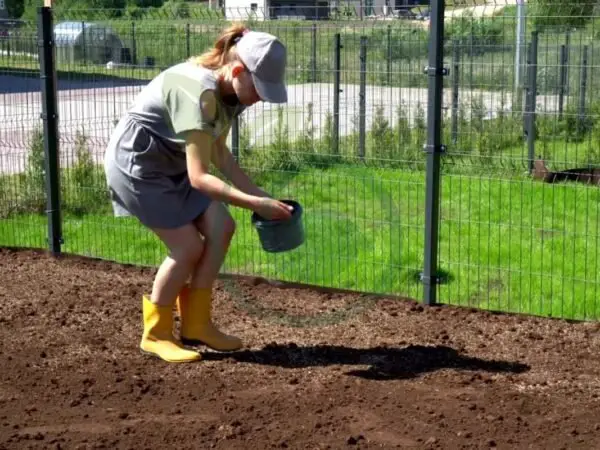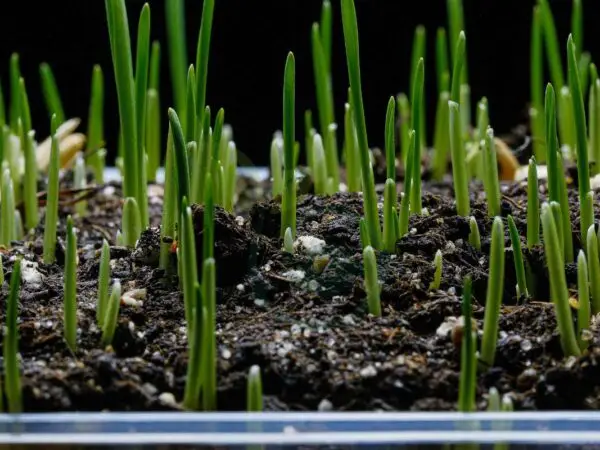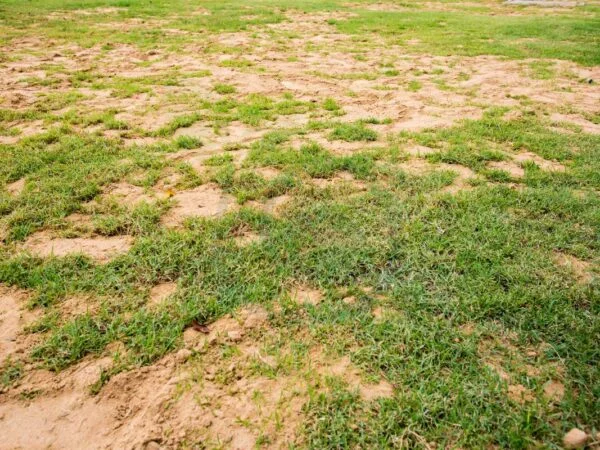In Minnesota, planting grass seed is a crucial step in achieving a lush and vibrant lawn. Understanding the best practices for planting grass seed in Minnesota's unique climate can lead to a successful and thriving lawn. By selecting the right type of grass seed that thrives in Minnesota's conditions, you can ensure your lawn remains healthy year-round. Factors such as soil composition, sunlight exposure, watering schedules, and lawn care play key roles in the success of your grass seed planting endeavors. With proper care and attention to detail, you can enjoy a beautiful green lawn that enhances the curb appeal of your property.
Key Takeaways
- Consider Minnesota's Climate: Take into account the specific climate conditions in Minnesota when selecting grass seed for optimal growth.
- Prioritize Seeding: Opt for seeding over sodding based on the advantages discussed, such as cost-effectiveness and better root establishment.
- Prepare Your Soil: Implement soil preparation tips like proper tilling and fertilization to create an ideal environment for grass seed germination.
- Choose Wisely: Select the right grass seed by considering factors like sunlight exposure, soil type, and intended use, as detailed in the article.
- Follow Best Practices: Adhere to recommended seeding techniques, including proper watering, coverage, and timing, to ensure successful grass growth.
- Maintain Regularly: Implement maintenance strategies like watering, mowing, and fertilizing to keep your lawn healthy and vibrant.
Understanding Minnesota's Climate
Seasonal Variations
Minnesota experiences distinct seasonal variations that impact grass seed growth significantly. Winter brings freezing temperatures, hindering seed germination. In contrast, spring offers optimal conditions with moderate temperatures and increased precipitation.
Planting grass seed in the fall allows the seeds to establish strong roots before winter sets in. The cool temperatures and consistent rainfall during this season promote successful germination.
Impact on Grass
Planting grass seed not only enhances the appearance of the lawn but also improves its overall health. The new grass helps prevent soil erosion, provides a lush green landscape, and creates a comfortable outdoor space.
The visual benefits of a well-maintained lawn include a vibrant green color, uniform texture, and improved curb appeal. Functionally, grass seed helps in reducing water runoff, promoting biodiversity, and creating a natural habitat for various organisms.
Optimal Planting Times
For optimal results, it is recommended to plant grass seed in Minnesota during the early fall or late spring. These times align with moderate temperatures and adequate moisture levels, facilitating successful germination.
Choosing Between Seeding and Sodding
Seeding Advantages
Seeding offers cost-effectiveness and customization options, allowing homeowners to choose specific grass types for their lawn. The process is natural and sustainable, promoting environmental friendliness compared to sodding. Seeding also provides a sense of accomplishment as you watch your lawn grow from scratch.
Despite its benefits, seeding comes with challenges. It requires a longer establishment time, meaning you may have to wait for the grass to fully grow. Ongoing maintenance such as watering and weeding is crucial for successful seed germination. However, the overall cost of seeding is usually lower than sodding in the long run.
Seeding Disadvantages
Common challenges with seeding include the risk of birds or other animals disturbing the seeds before they germinate. Moreover, unpredictable weather conditions can affect seed growth and lead to uneven patches in the lawn. While seeding allows for customization, it may not provide an instant solution for those looking to establish a lawn quickly.
Comparatively, sodding offers immediate gratification by providing an instantly lush green lawn. This method eliminates the waiting period associated with seeding and allows homeowners to enjoy their new lawn right away. Sodding also reduces the chances of weed growth and erosion due to its mature root system.
Sodding Advantages
The primary disadvantage of sodding lies in its higher initial cost compared to seeding. Homeowners need to invest more upfront for purchasing and installing sod but can benefit from an instant and established lawn. Another limitation is the restricted variety of grass types available with sodding, limiting customization options based on personal preferences.
Ensuring proper root establishment is crucial when sodding a lawn. Improper installation or lack of care can result in the roots not integrating well with the soil beneath, leading to a failed lawn establishment. Despite these challenges, sodding remains a popular choice for those seeking immediate results without waiting for seed germination.
Soil Preparation Tips
For Seeding
Preparing the soil before seeding is crucial for successful grass growth. First, clear the area of any debris or weeds to create a clean seedbed. Next, loosen the topsoil using a rake or tiller to improve seed-to-soil contact. Then, spread a layer of fertilizer to provide essential nutrients for the seeds.
For optimal grass growth, ensure the seeds are evenly distributed across the area. Watering consistently after seeding is vital to keep the soil moist for germination. Adequate sunlight and regular mowing post-germination will promote healthy grass development.
For Sodding
Before laying sod on your lawn, it's important to prepare the soil adequately. Start by clearing the area of any rocks, debris, or existing vegetation that may hinder sod establishment. Then, level the ground to create a smooth surface for laying the sod rolls evenly.
When laying sod, ensure each piece fits tightly together without overlapping. Water immediately after installation to help the roots establish in the soil beneath. Post-sodding care involves regular watering to keep the sod moist and promote root growth.
Selecting the Right Grass Seed
Seed Options
When choosing grass seed for Minnesota, consider varieties like Kentucky bluegrass, fine fescue, and perennial ryegrass. These options thrive in the state's climate and offer various benefits. Kentucky bluegrass is known for its lush appearance, while fine fescue is low-maintenance. Perennial ryegrass is ideal for high-traffic areas due to its durability.
For areas with ample sunlight, opt for Kentucky bluegrass as it thrives in full sun. Fine fescue, on the other hand, is perfect for shady spots where other grasses struggle to grow. Consider your soil type too; Kentucky bluegrass prefers well-drained soil while fine fescue tolerates poorer soils. When choosing grass seed, match the variety with your lawn's specific conditions for optimal results.
Adaptability
Different grass species exhibit varying levels of adaptability to Minnesota's climate. Selecting grass seed that can withstand local conditions is crucial for a thriving lawn. Species like tall fescue and Kentucky bluegrass are known for their adaptability and resilience to extreme weather changes in Minnesota. These grass types can endure harsh winters and hot summers typical of the region.
Adaptable grass varieties have developed mechanisms to cope with seasonal variations, ensuring they remain green and healthy throughout the year. By choosing resilient grass seed, homeowners can enjoy a lush lawn regardless of weather fluctuations, enhancing the overall aesthetics of their outdoor space.
Growth Rates
Understanding the growth rates of different grass seed varieties helps in planning and maintenance. Kentucky bluegrass establishes quickly but takes longer to reach full maturity compared to perennial ryegrass, which grows rapidly but requires frequent mowing. Factors like temperature, moisture levels, and soil quality influence how fast grass seeds germinate and develop.
To manage growth rates effectively, adjust watering schedules based on the species' requirements and regularly mow the lawn at suitable heights. Proper fertilization and soil aeration also play vital roles in promoting healthy growth patterns for your chosen grass variety. By monitoring growth rates closely, homeowners can achieve a well-manicured lawn throughout the growing season.
Best Practices for Seeding
Timing
Planting grass seed or laying sod requires precise timing to ensure successful lawn establishment. Choosing the right time to seed is crucial for optimal germination and growth. The best times to plant grass seed in Minnesota are early fall (late August to mid-September) and late spring (mid-May to early June), when the soil temperatures are ideal for seed germination.
To achieve a lush green lawn, follow a detailed timeline for planting and maintenance schedules. After seeding, keep the soil consistently moist by watering lightly several times a day until the seeds germinate. Once the grass reaches about 3 inches in height, it's time to mow for the first time.
Techniques
Evenly spreading grass seed is essential for a uniform and healthy lawn. Use a broadcast spreader to distribute the seed evenly across the area. Before planting, prepare the soil by removing any debris, weeds, or rocks. Rake the soil lightly to create a smooth surface for seeding.
Creating an ideal seedbed involves loosening the top layer of soil to promote good seed-to-soil contact. Aerate compacted soil to improve air circulation and water absorption, aiding in root development. For strong root systems, consider applying a starter fertilizer rich in phosphorus.
Watering
Proper watering practices are critical for nurturing a thriving lawn. Newly seeded areas require frequent watering to keep the soil consistently moist without becoming waterlogged. Established grass, on the other hand, needs less frequent but deeper watering sessions to encourage deep root growth.
Adjust your watering schedule based on weather conditions and grass type. In hot and dry weather, increase watering frequency to prevent drought stress on newly planted grass. For cool-season grasses commonly found in Minnesota, aim for about 1 inch of water per week through rainfall or irrigation.
Sod Installation Guide
Preparation
To prepare the soil for planting grass seed in Minnesota, conduct a soil test to determine its pH levels and nutrient content. Remove any existing weeds by hand or with herbicides. Incorporate organic matter like compost to improve soil structure and fertility. Proper soil preparation is crucial for establishing a healthy lawn that thrives in Minnesota's climate.
Laying Sod
When laying sod, ensure the soil is well-prepared and level before installation. Begin by placing the first row along a straight edge, staggering subsequent rows like bricks for stability. Press down on each piece to eliminate air pockets and promote root-to-soil contact. Water the sod immediately after installation to prevent drying out. Proper sod installation techniques are essential for ensuring a seamless and lush lawn in Minnesota.
Aftercare
After planting grass seed or laying sod, follow essential aftercare steps to maintain a healthy lawn. Mow newly established grass at a higher setting to avoid stress on developing roots. Water deeply but infrequently to encourage deep root growth and drought resistance. Fertilize according to soil test recommendations to provide necessary nutrients for optimal growth. A comprehensive aftercare routine is vital for nurturing both seeded and sodded lawns in Minnesota's varying seasons.
Maintenance Strategies
Fertilization
Fertilization plays a crucial role in promoting healthy grass growth by providing essential nutrients like nitrogen, phosphorus, and potassium. These nutrients help grass develop strong roots and vibrant green blades. When it comes to Minnesota lawns, slow-release fertilizers are ideal for the region's climate as they provide nutrients gradually over time. For newly planted grass seed or sod, it is recommended to fertilize in the fall to support root development before winter sets in.
Mowing
Proper mowing techniques are essential for maintaining a healthy lawn, as they promote thick turf growth and prevent weed invasion. The ideal mowing height varies depending on the grass type, with cool-season grasses like Kentucky bluegrass thriving at 2.5 to 3 inches tall. Regular mowing at the correct height helps prevent stress on the grass and encourages lateral growth for a lush appearance. Avoid common mowing mistakes like cutting the grass too short, as this can weaken the plants and make them more susceptible to diseases.
Troubleshooting Common Challenges
Pests and Diseases
Grass in Minnesota is susceptible to common pests like white grubs and diseases such as dollar spot fungus. Early detection of these issues is crucial for effective control. Implement preventive measures like proper lawn maintenance to minimize pest infestations. Treat affected areas promptly with suitable pesticides or fungicides.
To maintain a healthy lawn, it's essential to address soil issues that can hinder grass growth. Problems like compacted soil or nutrient deficiencies can be rectified by aerating the soil and applying organic fertilizers. Regular soil testing helps in identifying specific nutrient needs for optimal grass growth. Improving soil quality enhances the overall health of the lawn.
Weather Damage
Extreme weather conditions in Minnesota, such as harsh winters and hot summers, can pose challenges for maintaining a lush lawn. Protect your grass from weather-related damage by providing adequate watering during dry spells and adjusting mowing heights based on the season. Certain grass species like Kentucky bluegrass exhibit resilience to withstand extreme temperatures.
Pros and Cons Recap
Quick Review
To recap, planting grass seed in Minnesota offers numerous benefits such as cost-effectiveness, variety selection, and customization. Seeding allows for a more extensive range of grass types to suit specific needs. However, it requires more time and effort compared to sodding. For readers seeking a quick overview, consider the following key points from the article:
- Grass Seed: Cost-effective, diverse options, longer establishment time.
- Sod: Instant results, higher initial cost, limited varieties.
- Soil Preparation: Crucial for successful growth, promotes root development.
- Watering: Regular watering essential post-seeding or sodding.
- Maintenance: Consistent care ensures healthy lawn growth.
For detailed insights on each aspect of lawn care in Minnesota, revisit the respective sections for comprehensive guidance tailored to your needs.
Decision Making
When deciding between seeding and sodding, evaluate factors like budget, time constraints, and desired outcomes. Grass seed varieties offer versatility in choosing the right type based on sunlight exposure and soil conditions. In contrast, sodding provides immediate results but at a higher cost.
Consider your preferences regarding maintenance levels and timeline for a lush green lawn. Are you willing to invest time upfront for long-term benefits with seeding? Or do you prefer instant gratification with sod installation? Assess your priorities to make an informed decision aligning with your lawn goals.
Factors such as shade tolerance, traffic resistance, and maintenance requirements vary among grass species. Research different grass seed options, considering characteristics like drought resistance or cold tolerance. For those leaning towards sod, explore various turfgrass types suitable for Minnesota's climate and soil conditions.
Final Remarks
In the journey of planting grass seed in Minnesota, you've learned to navigate its unique climate, make informed choices between seeding and sodding, prepare your soil effectively, select the right grass seed type, implement best seeding practices, install sod correctly, maintain your lawn diligently, and troubleshoot common challenges. By weighing the pros and cons, you are now equipped with the knowledge to create a lush green space that thrives in Minnesota's conditions. Remember to stay proactive in caring for your lawn to enjoy a vibrant and healthy outdoor environment. Your efforts will pay off with a beautiful landscape that enhances your surroundings and offers a welcoming retreat for relaxation and enjoyment.
Frequently Asked Questions
### Is it better to seed or sod my lawn in Minnesota?
Seeding is cost-effective and offers a wider variety of grass types suitable for Minnesota's climate. Sodding provides instant results but can be more expensive. Consider your budget, timeframe, and desired outcome when choosing between seeding and sodding.
### What are the key factors to consider when selecting grass seed for Minnesota?
Choose grass seed varieties that are cold-tolerant, disease-resistant, and suitable for Minnesota's climate. Look for blends that include species like Kentucky bluegrass, fine fescue, and perennial ryegrass for optimal results in Minnesota's varying weather conditions.
### How should I prepare the soil before planting grass seed in Minnesota?
Ensure the soil is well-drained, free of debris, and properly aerated before planting grass seed. Conduct a soil test to determine nutrient levels and pH balance. Amend the soil as needed with organic matter to create an ideal environment for successful grass growth.
### What are the best practices to follow when seeding a lawn in Minnesota?
Seed during the appropriate time of year for Minnesota's climate, typically in early fall or spring. Follow proper seeding techniques such as evenly distributing seeds, watering consistently, and protecting newly seeded areas from foot traffic or pets to promote healthy grass growth.
### What are some common challenges I may face when planting grass seed in Minnesota?
Common challenges include weed invasion, uneven germination, poor soil quality, and inadequate watering. Monitor your lawn regularly for issues and address them promptly by implementing proper maintenance practices and seeking advice from local gardening experts if needed.
Image Source: Paid image from CANVA




